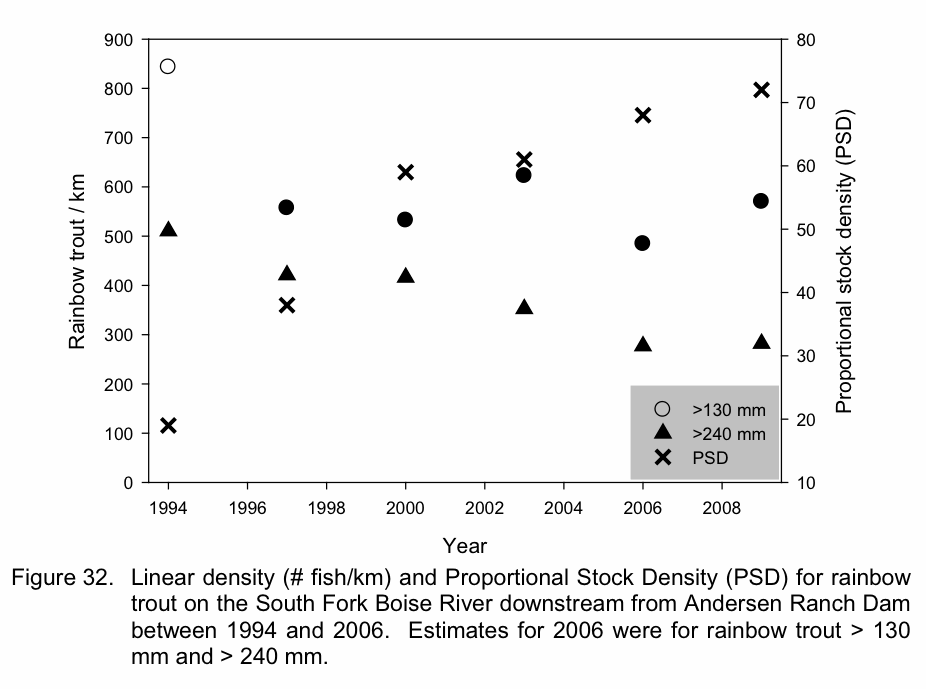Some new reading material is posted in the Library. It’s the IDFG write up of the October 2009 fish population survey. We’ll add some thoughts after the jump after we have some time to digest both the report and some Thanksgiving turkey. Your thoughts are welcome too.
One of the more interesting graphs is the estimate of fish per kilometer for the triennial surveys from 1994 through 2009 –
 The circles represent the estimated rainbow trout per kilometer (trout/km) that are roughly five inches or longer. The triangles are trout/km that are about 9.5 inches or longer. From 2006 to 2009 the fish larger than 9.5 inches is about the same. Trout/km larger than five inches is up, maybe as much as 20 percent over 2006, so this is encouraging.
The circles represent the estimated rainbow trout per kilometer (trout/km) that are roughly five inches or longer. The triangles are trout/km that are about 9.5 inches or longer. From 2006 to 2009 the fish larger than 9.5 inches is about the same. Trout/km larger than five inches is up, maybe as much as 20 percent over 2006, so this is encouraging.
Setting aside the 1994 data it seems that trout/km estimates fluctuate within a range of 450 to 650. The 2009 survey fits in that range. Should we regard the 1994 information as somewhat an outlier, or a goal worthy of going back to the good old days?
More concerning is the alignment of the triangles. The 2009 survey found the trout/km about the same as 2006, and both surveys are at the bottom of the trend. When the fall 2012 survey is done it will be interesting to see if the numbers in 2009 of trout/km more than five inches translates to more trout/km greater than 9.5 inches.
When looking at the chart above it’s also helpful to keep in mind the size class distribution from the surveys over time. We took the previous IDFG reports and data and created a set of charts that you can look at here. As the number of trout/km larger than 9.5 inches has been decreasing the surveys also show more really big fish showing up in the data. The biggest of the big fish were in the 2006 survey following a few years of the river being inundated with mormon crickets, and in 2009 there were still a few of these big fellas.
There is much more to the report making for future posts to this website, but one other thing to keep in mind from 2009 is the survey shows a large number of the really small fish, indicating good recruitment from 2008 portending continued good wild trout fishing.







Pingback: Triennial Trout Tracking |